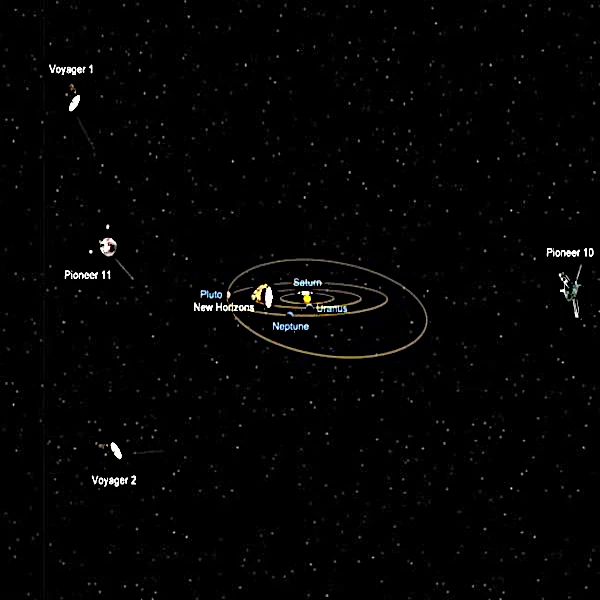
Space probes are our eyes and hands in the Universe. In 2025, about thirty of them continue to travel around or far from the Sun, sometimes beyond the heliopause. Some still transmit data, others have fallen silent, but they continue their orbit, silent witnesses to human ingenuity.
The table below lists the main probes still active or notable, with their distance from the Sun or Earth, their status, and their main mission.
| Probe | Distance (AU) | Status | Main Mission |
|---|---|---|---|
| Voyager 1 | 161 | Active (weak signals) | Interstellar medium |
| Voyager 2 | 134 | Active (communications restored) | Interstellar medium |
| New Horizons | 59 | Active | Study of the Kuiper Belt |
| Pioneer 10 | 133 | Silent since 2003 | First Jupiter flyby |
| Pioneer 11 | 107 | Silent since 1995 | First Saturn flyby |
| Solar Orbiter | 0.9 | Active | Inner heliosphere |
| Parker Solar Probe | 0.1 | Active | Solar corona |
| JUICE | 3.2 | Active | Jupiter's moons |
| Juno | 5.0 | Active | Jupiter (polar orbit) |
| Lucy | 2.3 | Active | Jupiter Trojans |
| Osiris-REx | 1.1 | Active | Rendezvous with Apophis (2029) |
| Perseverance | 1.0 | Active | Search for life on Mars |
| Curiosity | 1.0 | Active | Martian geology |
| InSight | 1.0 | Inactive (2022) | Martian seismology |
| MAVEN | 1.0 | Active | Martian atmosphere |
| ExoMars TGO | 1.0 | Active | Martian atmospheric gas |
| Chandrayaan-2 Orbiter | ~0.0026 | Active | Lunar observation |
| Lunar Reconnaissance Orbiter | ~0.0026 | Active | Lunar topography |
| CAPSTONE | 0.02 | Active | NRHO orbits (Gateway preparation) |
| Artemis I Orion | N/A | Mission completed (2022) | Orion system test |
| BepiColombo | 0.6 | Active | En route to Mercury (arrival 2025) |
| Hayabusa2 (Extended) | 1.5 | Active | Asteroid flyby (1998 KY26) |
| DART | N/A | Successful impact (2022) | Asteriod deflection |
| Luna 25 (Russia) | N/A | Landing failure (2023) | Lunar mission |
Sources: NASA Voyager Mission, ESA/NASA Solar Orbiter, Parker Solar Probe, NASA Juno Mission, ESA JUICE.